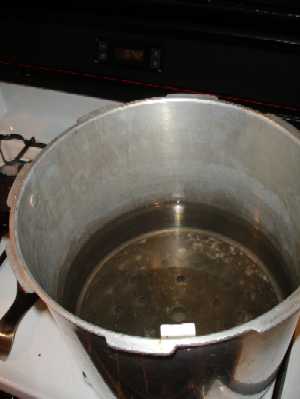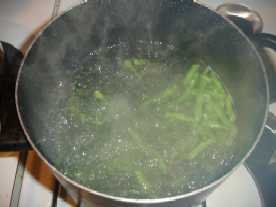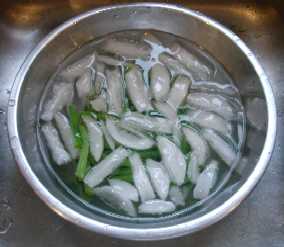
Looking for How to Freeze Any Type of Cabbage - Easily! With Step-by-step Directions, Photos, Ingredients, Recipe and Costs in 2025? Scroll down this page and follow the links. And if you bring home some fruit or vegetables and want to can, freeze, make jam, salsa or pickles, see this page for simple, reliable, illustrated canning, freezing or preserving directions. There are plenty of other related resources, click on the resources dropdown above. If you are having a hard time finding canning lids, I've used these, and they're a great price & ship in 2 days.
If you have questions or feedback, please let me know! There are affiliate links on this page. Read our disclosure policy to learn more.
How to Freeze Any Type of Cabbage - Easily! With Step-by-step Directions, Photos, Ingredients, Recipe and Costs
Click here for a PDF print version coming
Freezing your own cabbage is easy, and is an easy way to have your own healthy pesticide-free homegrown organic cabbage to use in the winter in cooked dishes. (Obviously, the freezing process makes the cabbage generally unsuitable for fresh use, as it won't be crisp, BUT it is fine for use in stir fry and other cooked dishes.)
Ingredients
- Fresh cabbage (savoy, red, white, regular, chinese cabbage, etc.)
Equipment
- 1 large pot of boiling water
Directions - Step by Step
Instructions
Step 1 - Get yer cabbage!
Start with fresh cabbage - as fresh as you can get. Select freshly picked, solid heads. If there is a delay between harvesting and freezing, put it in the refrigerator or put ice on it.
Step 2 - Wash the cabbage!
I'm sure you can figure out how to rinse the cabbage in plain cold or lukewarm water.
Step 3 - Trim the ends and cut into smaller pieces
Pull any coarse outer leaves from the heads. Cut into medium shreds or thin wedges, or just separate the heads into leaves.
Step 4 - Get the pots ready
 Get the
pot of
boiling water ready (about
2/3 filled) and a LARGE bowl with ice and cold water.
Get the
pot of
boiling water ready (about
2/3 filled) and a LARGE bowl with ice and cold water.
Step 5 - Blanch the cabbage for 90 seconds
 All fruits and vegetables contain enzymes and bacteria
that, over time, break down the destroy nutrients and change the color,
flavor, and texture of food during frozen storage. cabbage requires a brief
heat treatment, called blanching, in boiling water or steam, to
destroy the enzymes before freezing. Blanching times for cabbage is 11/2
minutes. (which is 90 seconds) (the duration is tested to be just long enough to stop the action of
the enzymes and kill the bacteria).
All fruits and vegetables contain enzymes and bacteria
that, over time, break down the destroy nutrients and change the color,
flavor, and texture of food during frozen storage. cabbage requires a brief
heat treatment, called blanching, in boiling water or steam, to
destroy the enzymes before freezing. Blanching times for cabbage is 11/2
minutes. (which is 90 seconds) (the duration is tested to be just long enough to stop the action of
the enzymes and kill the bacteria).
Begin counting the blanching time as soon as you place the cabbage in the boiling water. Cover the kettle and boil at a high temperature for the required length of time. You may use the same blanching water several times (up to 5). Be sure to add more hot water from the tap from time to time to keep the water level at the required height.
Step 6 - Cool the cabbage
 Cool
cabbage immediately in ice water. Drain
the cabbage thoroughly (this shouldn't take more than a minute).
Cool
cabbage immediately in ice water. Drain
the cabbage thoroughly (this shouldn't take more than a minute).
After vegetables are blanched, cool them quickly to prevent overcooking. Plunge the cabbage into a large quantity of ice-cold water (I keep adding more ice to it). A good rule of thumb: Cool for the same amount of time as the blanch step. For instance, if you blanch cabbage for 1.5 minutes, then cool in ice water for 1.5 to 2 minutes.
Drain thoroughly.
Step 7 - Bag the cabbage
I love the FoodSavers (see this page for more information) with their vacuum sealing! I am not paid by them, but these things really work. If you don't have one, Ziploc bags work, too, but it is hard to get as much air out of the bags. Remove the air to prevent drying and freezer burn. TIP: If you don't own a vacuum food sealer to freeze foods, place food in a Ziploc bags, zip the top shut but leave enough space to insert the tip of a soda straw. When straw is in place, remove air by sucking the air out. To remove straw, press straw closed where inserted and finish pressing the bag closed as you remove straw. It works fairly well, but I'll stick to the Foodsaver, since the bags are microwaveable and much thicker than a Ziploc bag (even the Ziploc "freezer bags")
Step 8 - Done!
Pop them into the freezer, on the quick freeze shelf, if you have one!
Tips:
- Harvest early in the morning, especially if the weather is hot, to get peak flavor.
- Harvest the cabbage at its peak maturity (firm, straight, not lumpy)
- Process promptly after harvesting, or keep cooled in the fridge or with ice until then.
Frequently Asked Questions
-
When you take your cabbage out of the freezer, how long do they take to cook?
Just the same as store-bought frozen cabbage: 3 to 5 minutes; just until hot and tender. - How long can they be frozen?
It depends upon how cold is your freezer and how you packed them. Colder (deep freezes) are better than frost free compartments, which actually cycle above freezing (that's how they melt the ice). Vacuum packing results in longer storage capability, too. Thicker bags also help prevent freezer burn.
In general, up to 9 months in a ziploc bag in an ordinary freezer, and 14 months in a deep freeze in a vacuum packed bag. After that, the beans won't make you sick; they just won't taste as good.
- When blanching cabbage you say to cook for 3 minutes only. When
we put the cabbage into the boiling water the boiling stops for several
minutes before starting again. This may add 5 or 10 minutes to the process.
Is this good or should we take the cabbage out after 3 minutes even if the
water hasn't come back to a boil?
Excellent question. The directions from the USDA assume that we're using a large enough pot and a large enough burner that it returns to a boil quickly (say 2 or 3 minutes). If you can, use a larger pot on a hotter burner. If that's not practical, I just add a couple of minutes to the time - otherwise the food gets overcooked!
This document was adapted from the "Complete Guide to Home Canning,"
Agriculture Information Bulletin No. 539, USDA, revised 2006.
Reviewed May 2009.
Tips
Comments and Feedback
Illustrated Canning, Freezing, Jam Instructions and Recipes
[ Easy Home Canning Directions] [FAQs - Answers to common questions and problems] [Recommended books about home canning, jam making, drying and preserving!] [Free canning publications to download and print]
Looking for canning equipment and supplies?
Water bath canner with a jar rack
Pressure canners for gas, electric and induction stoves: Presto 23Qt or T-fal 22Qt
Canning scoop (this one is PERFECT)
Ball Blue book (most recent version)
Jars: 8oz canning jars for jams
Find Other types of farms:
Farm markets and roadside stands
Road trips and camping resources
Local Honey, apiaries, beekeepers
Consumer fraud and scams information
Home canning supplies at the best prices on the internet!
Maple Syrup Farms, sugarworks, maple syrup festivals
Environmental information and resources
Farms For Your Event for birthday parties, weddings, receptions, business meetings, retreats, etc.
Festivals - local fruit and vegetable festivals
Get the
most recent version of
the Ball Blue Book
With this Presto 23 quart pressure canner and pressure cooker, you can "can" everything, fruits, vegetables, jams, jellies, salsa, applesauce, pickles, even meats, soups, stews. Model 01781

You can make jams, jellies, can fruit, applesauce, salsa and pickles with water bath canners, like this Granite Ware 12-Piece Canner Kit, Jar Rack, Blancher, Colander and 5 piece Canning Tool Set

